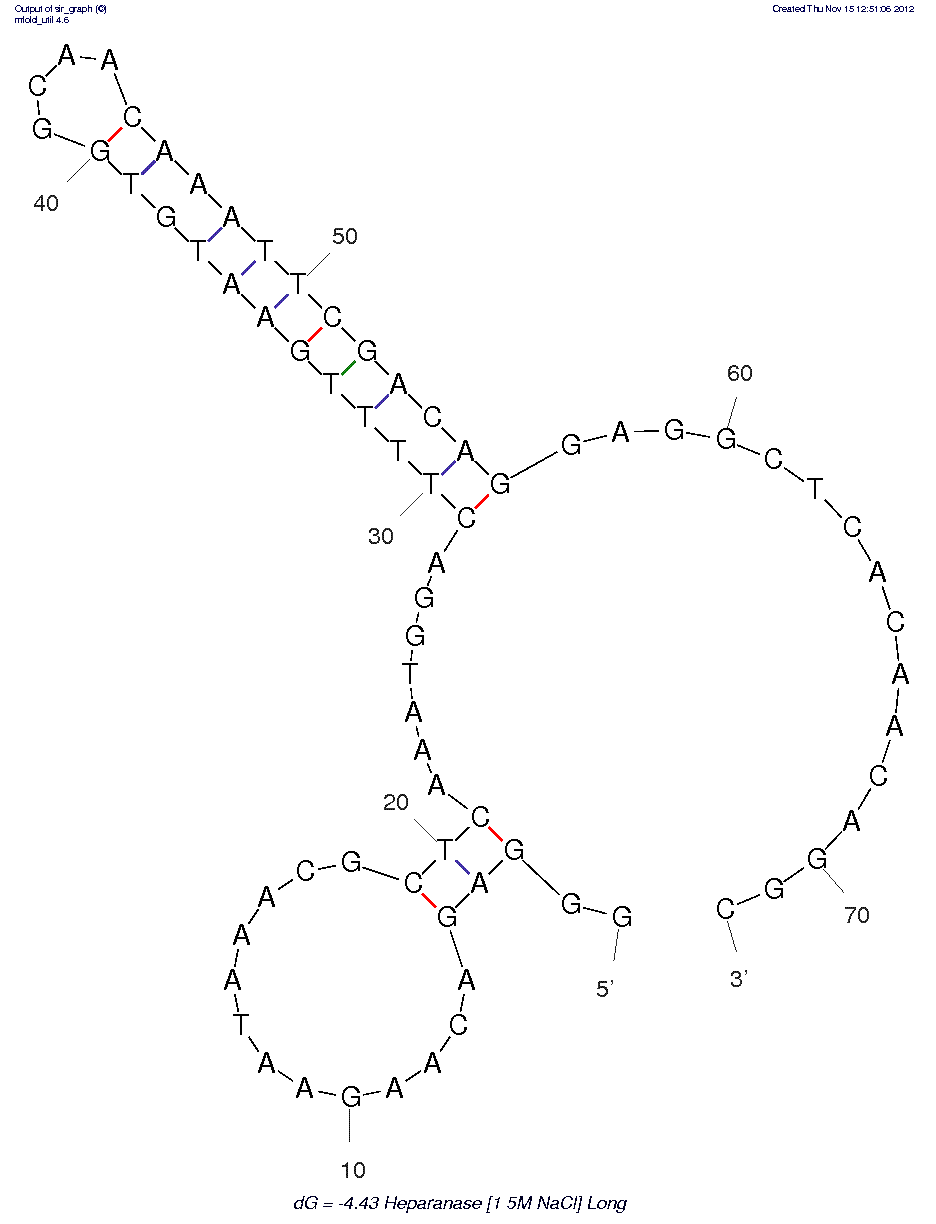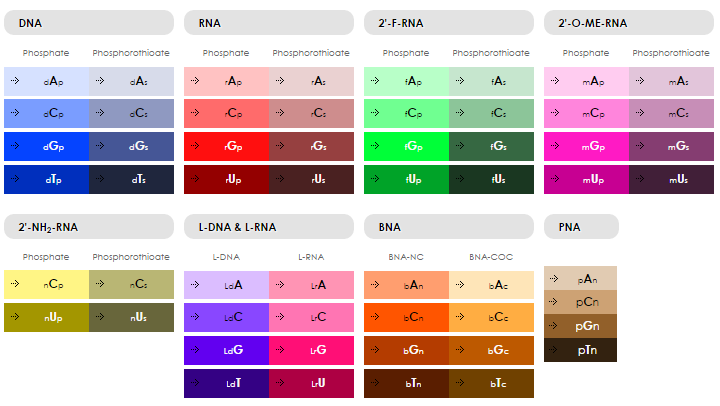Aptagen, LLC
 DNA
Heparanase (HPSE1)
Protein
12 nM nM (reported value)
Salt Solution: 100 mM NaCl, 20 mM KCl, 5 mM MgCl2
RT°C
NA If the oligo is a known aptamer sequence: For binding studies, perform a refolding protocol to ensure proper function (i.e. binding to antigen or target). Refer to the aptamer reference source for the appropriate refolding parameters and binding conditions. Note: it is unknown whether aptamer functions properly without refolding.
Selected in the presence of 1.5 M NaCl.
DNA
Heparanase (HPSE1)
Protein
12 nM nM (reported value)
Salt Solution: 100 mM NaCl, 20 mM KCl, 5 mM MgCl2
RT°C
NA If the oligo is a known aptamer sequence: For binding studies, perform a refolding protocol to ensure proper function (i.e. binding to antigen or target). Refer to the aptamer reference source for the appropriate refolding parameters and binding conditions. Note: it is unknown whether aptamer functions properly without refolding.
Selected in the presence of 1.5 M NaCl.
This aptamer showed significant inhibition of heparanase in a Matrigel cell invasion assay, outperforming the polyclonal anti-herparanase antibody used as a positive control.
A 30-nt truncated version of this aptamer including only the stem-loop structure showed similar binding affinity but diminished inhibitory activity.
Heparanase (1.5M NaCl) (ID# 425)

This aptamer showed significant inhibition of heparanase in a Matrigel cell invasion assay, outperforming the polyclonal anti-herparanase antibody used as a positive control.
A 30-nt truncated version of this aptamer including only the stem-loop structure showed similar binding affinity but diminished inhibitory activity.
5'dGpdGpdGpdApdGpdApdCpdApdApdGpdApdApdTpdApdApdApdCpdGpdCpdTpdCpdApdAp dApdTpdGpdGpdApdCpdTpdTpdTpdTpdGpdApdApdTpdGpdTpdGpdGpdCpdApdApdCpdApdApdAp dTpdTpdCpdGpdApdCpdApdGpdGpdApdGpdGpdCpdTpdCpdApdCpdApdApdCpdApdGpdGpdCp 3'
74
22348.62 g/mole
727000 L/(mole·cm)
45.83%
1.38
30.74
Note: Information on this aptamer oligo was obtained from the literature and hasn't been validated by Aptagen.
Simmons, SC, et al. Development of novel single-stranded nucleic acid aptamers against the pro-angiogenic and metastatic enzyme heparanase (HPSE1). PLoS One (2012) 7:e37938.
Have your aptamer oligo synthesized ORDER NOW




We are always looking for ways to improve. Please tell us what you think.